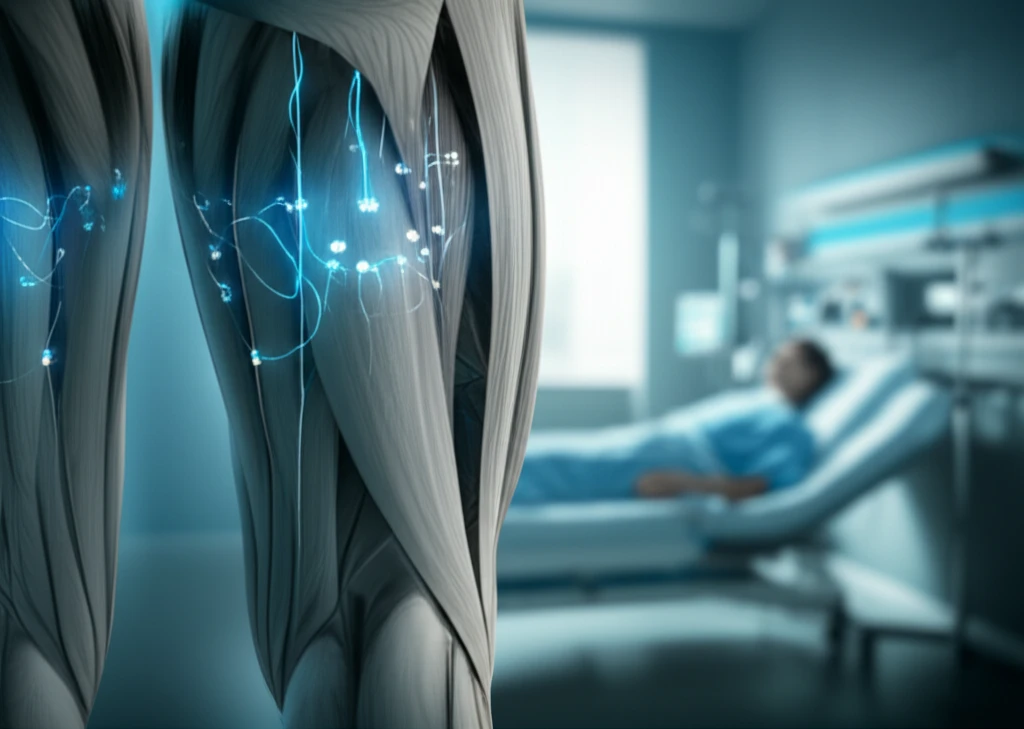
Kidney Transplants: How Neuromuscular Stimulation Beats Edema and Improves Blood Flow
"New research shows neuromuscular stimulation is more effective than compression devices for kidney and pancreas transplant recipients dealing with lower limb edema and blood flow issues."
Kidney and pancreas transplants can bring a new lease on life, but they also come with a unique set of challenges during recovery. One common issue is lower limb edema—swelling in the legs and feet due to fluid buildup. This happens because the body undergoes significant fluid shifts after surgery.
To combat this edema, doctors often use intermittent compression (IPC) devices, which squeeze the legs to encourage fluid movement. However, these devices can be cumbersome and may not always be effective for everyone. Now, there's a promising alternative on the horizon: neuromuscular stimulation.
A recent study has explored the use of the Geko Plus device, a small, internally powered calf stimulator, in transplant patients. This device has already shown potential in improving blood flow, and researchers wanted to see how it stacked up against traditional IPC methods in reducing edema.
The Science Behind the Study: Comparing Neuromuscular Stimulation to IPC

Researchers at Western University in London, Ontario, conducted a prospective, randomized, controlled study to compare the effectiveness of IPC and the Geko Plus device. They recruited 30 patients undergoing kidney or pancreas transplants and randomly assigned them to one of two groups:
- Group 1: Wore IPC devices (n=16)
- Group 2: Used the Geko Plus device (n=14)
The Verdict: Neuromuscular Stimulation Takes the Lead
This study marks a significant step forward in post-transplant care. By demonstrating the superiority of neuromuscular stimulation over standard compression devices, it offers a promising avenue for improving patient outcomes and quality of life. As research continues and the Geko Plus device becomes more widely available, we can anticipate a future where transplant recipients experience smoother, more comfortable recoveries.
